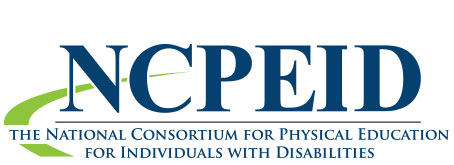APENS HistoryPhysical education has long been a component of the American education system. Prior to the 1950s, physical education for individuals with disabilities consisted of medically inspired efforts toward remediation of their “condition”. However, during the second half of the last century, society began to view individuals with disabilities as having a valuable yet modified set of abilities. This required a different approach to physical education. Programs in higher education identified the need that persons teaching physical education must also know how to address children with disabilities. The specialty of adapted physical education emerged to address the needs of people with disabilities.
These changes in higher education paralleled changes in PK-12 education as the Federal Government enacted legislation (i.e., PL 94-142) mandating equal opportunity in education for individuals with disabilities in 1975. In 1990 reauthorization, the Individuals with Disabilities Education Act (IDEA) extended educational protections to require that, to the greatest extent possible, all school-aged students with disabilities have access to physical education in a typical school environment with their peers without disabilities. IDEA further required that each student with a disability receiving special education services have an Individualized Education Program (IEP) drawn up which would include a program of physical education, specially designed (adapted) if necessary, to be appropriate for the individual.
A problem within this Federal legislation is that each state is left to define what adapted physical education means with respect to legislative compliance. It is easy to see, however, that the requirements that all students with disabilities have access to physical education; that the physical education program be specially-designed (adapted) if needed to meet the student’s needs; and that the special education programs be documented via an IEP could overtax the skills and capabilities of the general physical education teacher.
In response to these professional challenges in the Spring of 1991, the National Consortium for Physical Education and Recreation for Individuals with Disabilities (now NCPEID) in conjunction with the National Association of State Directors of Special Education (NASDSE) and Special Olympics International conducted an "Action Seminar" on adapted physical education for state directors of special education and leaders of advocacy groups for individuals with disabilities. This conference had two goals: (a) identify the barriers that were preventing full provision of appropriate physical education services to individuals with disabilities, and (b) establish an action agenda for addressing and resolving these problems.
Although numerous barriers were identified by the group, the most significant for state education leaders were:
As a result of the “Action Seminar” it was recommended that NCPEID develop professional standards for adapted physical education and a means for evaluating these standards. These products could then be used by state and school administrators as well as parents to communicate the need for adapted physical education and to evaluate who was qualified to provide physical education services to students with disabilities.
Thus, the resulting Adapted Physical Education National Standards (APENS) Project produced: (1) a national job analysis to identify roles and responsibilities adapted physical educators; (2) the APENS; (3) validated test items aligned with the APENS; (4) a national certification exam to measure the applicant’s competence to carry out the job of an adapted physical education teacher; (5) and an APENS study guide. The APENS, the corresponding exam items, and study guide have been updated periodically since the exam was first offered in 1997 (i.e., 2nd edition in 2006; 3rd edition in 2018).
|
